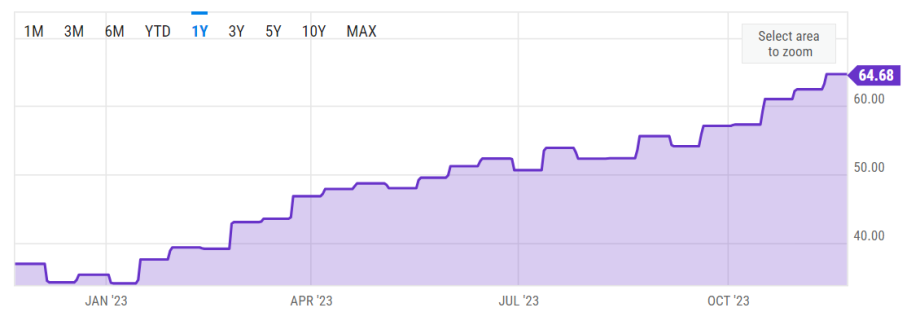As the BTC price rises, miners’ willingness to invest increases. With almost 500 exahashes per second (EH/s), the mining industry is catapulting computing power to ever higher levels. The difficulty also continually reaches new highs.
To ensure that the halving repeats at regular intervals, there is the Mining Difficulty. When new miners join the network or an existing miner upgrades their hardware, the hashrate increases. The same thing happens with difficulty – the difficulty increases the more you mine.
The difficulty decreases proportionally when the hash rate of Bitcoin falls. To ensure that the block time does not continue to shrink, the difficulty automatically adjusts every 2,016 blocks. This results in an average block time of ten minutes.

The competition remains fierce
There is currently more competition than ever for valuable coins before the mining reward is halved again. This leads to an extremely competitive environment. As a result, efficiency is becoming increasingly important. Bitcoin miner Hive focuses on deploying new machines quickly, maintaining high uptime, and acquiring equipment at the lowest possible cost. “The ability to produce efficiently is crucial to survive in this highly competitive market,” explains a company spokesperson to BTC-ECHO.
However, Bitcoin miners see the halving as a “double-edged sword”. On the one hand, the supply will be halved, and the BTC price will rise in the long term, according to Hive. However, on the other hand, production will also be halved, which could create a challenging situation in the current price environment. The current market environment remains tense for miners.
You can find out how Bitcoin is doing in general and which indicators are important now in the new BTC-ECHO Bitcoin Report.
This might also interest you